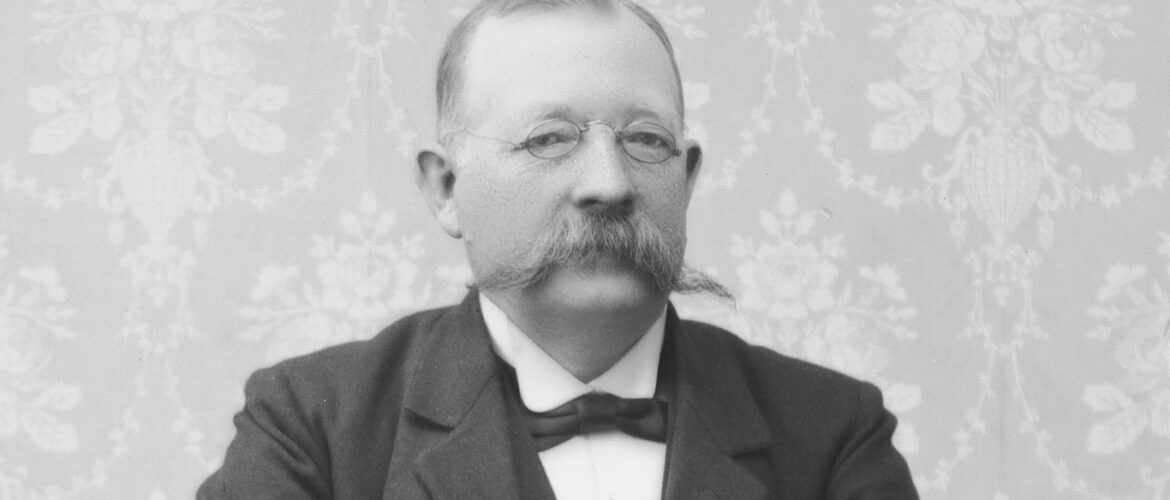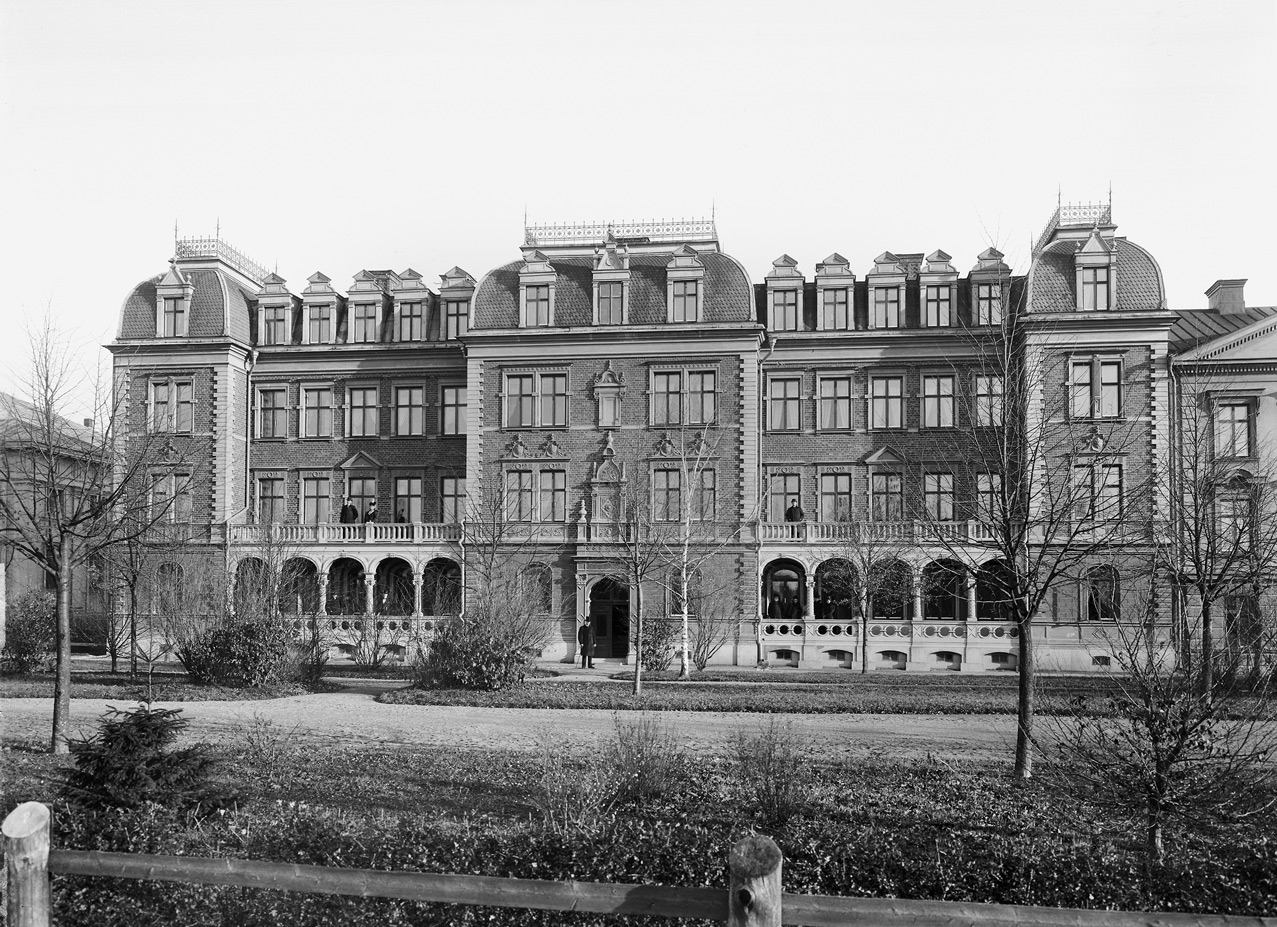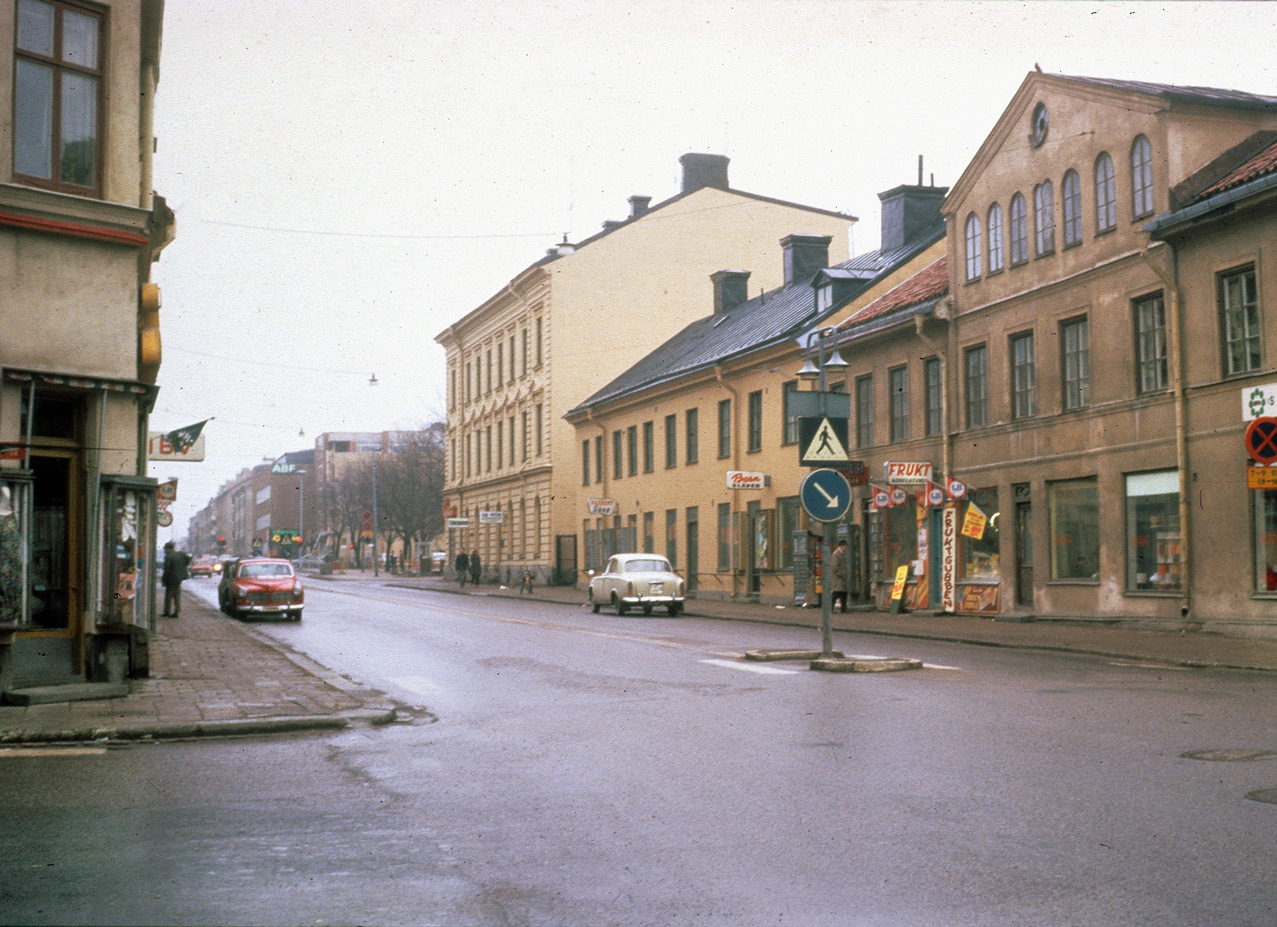1845-1932.
Architect.
Carl Axel Ekholm was born in Sund in Östergötland and was Uppsala's first city architect from 1878 to 1912.
Ekholm began his education at the Technical Elementary School in Norrköping before studying architecture at the Royal Academy of Fine Arts in Stockholm. Ekholm was inspired early on by the Neo-Renaissance style, which came to characterize many of the buildings he designed.
After working in various architectural offices and as a city engineer and master builder in Oskarshamn in 1877, Ekholm became city architect in Uppsala. In the 1870s, due to the risk of fire, it was forbidden to build new wooden houses and in Uppsala, 75 percent of the cityscape consisted of wooden houses.
Ekholm designed around 150 buildings in Uppsala during his lifetime. He created houses in various styles such as Neo-Renaissance, Neo-Baroque and Art Nouveau, several of which are still standing. In 2005, despite protests, the so-called Bodénska huset and several other 19th-century houses in the district were demolished to make way for the criticized Uppsala Konsert & Kongress.
Österplan 13 in Uppsala, built in 1888. Photo: Unknown photographer and unknown year / Upplandsmuseet.
Examples of houses that Ekholm was involved in, which are still standing are: Gästrike-Hälsinge nation (1880), Norrlands nation (1887-1889, the facade facing Fyrisån by I.G. Clason), the old burial chapel at the Old Cemetery in Uppsala (1882-1883), Österplan 13 (1888), Dragarbrunnsgatan 48 (1889), Magdeburg Girls' School (1890) and Regnellianum (1891-1892).
Burial site: 0128-1256
Image description: Carl Axel Ekholm with his family in 1899, his wife Anna Ottilia Hildegard and daughter Signe Hedvig. Photo: Heinrich Osti / UUBThe image is cropped]
Click here for an uncropped image



